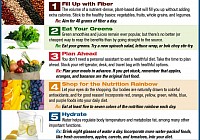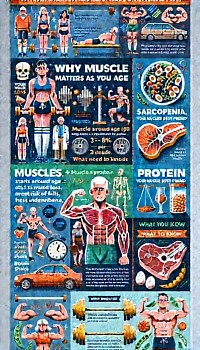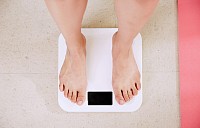Wellness Blog, RLW News, and Specials
Open by Appointment only this week
This Week Office Will be open BY APPOINTMENT ONLY!!
Now Accepting Anthem and Aetna commercial insurance for our concierge memberships!!!
COMING SOON!!!
Also we will be offering Concierge Medicine soon, for a limited Selection of Insurance plans. We will post accepted insurance plans once credentialed.
Please Call (603)793-5969
Or email Revolutionlongevity@gmail.com for appointment
💡 Why Exercise Lowers BP
💡 Why Exercise Lowers BP
1. Reduces arterial stiffness→ blood flows easier
2. Lowers stress hormones(cortisol, adrenaline)
3. Helps kidneys excrete excess sodium
4. Promotes healthy weight → less strain on vessels
😆Fun Fact:A single workout can lower BP for up to 24 hours ("post-exercise hypotension")!
Happenings at Revolution Longevity and Wellness
Revolution longevity and Wellness is accepting new Patients!!!!
We now accept Anthem and Aetna for our concierge memberships!!!
We offer Direct Primary care memberships.We also take non member acute visits for minor illness and injuries! We also offer DOT physicals, Sports and school physicals!!
Specials for September:
Sports Physicals 25 dollars (by appointment only)
DOT physicals 99 dollars(by appointment only)
Sign up for a one year membership and waive the initial Start up fee!!!!
Call or text for appointment: (603)468-2046
650879911085313
Benefits of Direct Primary Care in New Hampshire
Top 7 Benefits of Direct Primary Care in New Hampshire
If you've ever felt rushed through a doctor visit or frustrated by surprise medical bills, you're not alone. Healthcare today often feels impersonal, confusing, and expensive. But there's a better way. Direct Primary Care (DPC) is transforming the way patients experience healthcare—especially right here in New Hampshire.
As a local provider serving Stratham, Exeter, Newmarket, Greenland and surrounding areas, we’ve seen firsthand how this model changes lives. Here are the top 7 benefits of Direct Primary Care that make it a smarter, more affordable choice for individuals and families across the Seacoast.
1. More Time With Your Doctor
In traditional practices, doctors often see 20+ patients a day. That leaves little time for meaningful conversations. With DPC, our schedule is different—on purpose. We limit the number of patients we serve so that we can spend 30 to 60 minutes with each person. That means more time to listen, diagnose, and explain.
Whether you're managing a chronic condition or just need a quick checkup, you get the attention you deserve without feeling rushed.
2. No Insurance Hassles
One of the biggest frustrations in healthcare is dealing with insurance. Prior authorizations, billing codes, deductibles—they all add up to delays and confusion.
In Direct Primary Care, you pay a flat monthly membership fee that covers most of your care. No co-pays. No surprise bills. No worrying about whether your visit is "covered."
You can still use insurance for things like hospital visits or specialists, but your primary care? It stays simple.
3. Same-Day or Next-Day Appointments
When you're sick, the last thing you want to hear is "the next available appointment is next week." DPC gives you access to same-day or next-day visits so you can get care when you actually need it.
Whether it’s a sore throat, sprained ankle, or minor illness, we’re here for you. No waiting rooms full of people. No long delays.
4. Transparent, Predictable Costs
No more guessing what your bill will look like. Our pricing is clear and up front. Your membership includes unlimited visits, routine labs, and many in-office procedures.
Need a school physical? Minor stitches? We’ll tell you exactly what it costs—if anything—before we begin. And because we don’t bill insurance, there’s no markup or hidden charges.
5. A Focus on Preventive and Holistic Care
We don’t just treat symptoms—we look at the whole person. Our approach to primary care includes lifestyle coaching, weight loss counseling, skincare support, and even longevity medicine.
Whether you’re trying to improve your energy, manage stress, or lose weight, we create personalized plans that go beyond prescriptions.
6. Direct Communication With Your Provider
Ever try to get in touch with your doctor only to be bounced between voicemail, nurses, and call centers? With DPC, you get a direct line to us. Text, email, or call—we’re available.
This is especially important for families managing ongoing conditions, or for individuals who want consistent, reliable guidance on their health.
7. Local, Personalized Healthcare That Fits Your Life
We live and work in the same communities you do. That means we understand the unique challenges of healthcare in the Seacoast region.
Whether you’re commuting to Portsmouth, raising a family in Stratham, or retiring in Exeter, our care is built around you. We’re not a big hospital chain. We’re your neighborhood clinic, and we treat you like a neighbor.
Is Direct Primary Care Right for You?
If you want a healthcare experience that’s personal, accessible, and affordable—Direct Primary Care might be the perfect fit. Especially if you’re:
An individual without insurance or with a high-deductible plan
A busy parent juggling care for multiple family members
Someone tired of surprise bills and rushed visits
Interested in holistic, preventive medicine that focuses on long-term wellness
Let’s Rethink Healthcare Together
At our clinic, we believe healthcare should be simple, transparent, and patient-centered. If you’re in Stratham, Exeter, Newmarket, Portsmouth, or anywhere in the southern NH/seacoast area, we’d love to show you what Direct Primary Care can do for you and your family.
Schedule an appointment today!! Better care is just around the corner.
Fitness Personality Quiz
🏆 What’s Your Fitness Personality? Quiz
📌 Quiz Questions & Answer Options
1. How do you feel about group workouts?
- A) Love them! The more, the merrier! 🎉
- B) I’d rather work out alone. 🙅♂️
- C) Only if it’s competitive (like a race or game). 🏆
- D) Maybe a small, chill group (yoga, hiking). 🧘
2. Your ideal weekend activity is:
- A) Brunch with friends → then a dance class! 💃
- B) Solo hike or gaming marathon. 🎮
- C) Something adrenaline-packed (rock climbing, soccer). 🧗
- D) A long walk while listening to podcasts. 🎧
3. Pick a motivational quote:
- A) "Squad goals!" 👯
- B) "I don’t need a spotter."
- C) "I didn’t come here to take part—I came to take over!"
- D) "Movement is medicine." 🌿
4. Your gym nightmare is:
- A) Empty gym. Too lonely! 😢
- B) Crowded gym. Too many people! 😤
- C) No challenges or scores to beat. 😴
- D) Loud music and yelling. 🎵
5. Your fitness goal is:
- A) Have fun while staying active! 🥳
- B) Get stronger on my own terms. 🏋️
- C) Crush a PR (personal record). ⏱️
- D) Feel balanced and stress-free. ☯️
---
🎯 Quiz Results
Mostly A’s: Social Butterfly 🦋
Mostly B’s: Lone Wolf 🐺
Mostly C’s: Competitor 🏆
Mostly D’s: Zen Seeker 🧘
Mix of A/C: Adventurer 🌍
Mix of B/D: Multitasker 📚🤹♂️
Pick Your Workout Based on Your Personality!
1. The Social Butterfly 🦋
📍Traits: Loves groups, chatter, teamwork.
💠Perfect Workout:
- Zumba or dance classes 💃
- Team sports (volleyball, soccer) ⚽
- Running clubs 🏃♀️🏃♂️
Pro Tip💡: Find a gym buddy—you’ll never skip a workout!
❔Why? You’ll stay motivated with friends! 💑👯
2. The Lone Wolf 🐺
📍Traits: Independent, introverted, hates crowds.
💠Perfect Workout:
- Weightlifting(solo grind) 🏋️
- Running/Hiking(solo + nature) 🌲 🥾⛰️🏃♀️
- Home workouts** (YouTube, apps) 📱
Pro Tip💡: Invest in great headphones and own your me-time
❔Why? No small talk, just gains.
3. The Adventurer 🌍
📍Traits: Thrives on novelty, hates routine.
💠Perfect Workout:
- Rock climbing 🧗
- Surfing/Kayaking 🏄♂️
- Obstacle races (Spartan, Tough Mudder) 🏅
Pro Tip💡: Try a new sport every month!
❔Why? Boredom is your enemy!
4. The Competitor 🏆
📍Traits: Loves challenges, scores, winning.
💠Perfect Workout:
- CrossFit (HIIT + leaderboards) ⏱️⏳
- Martial arts (BJJ, boxing) 🥊 🥋
- Spin classes(race the leaderboard!) 🚴♀️
Pro Tip💡: Sign up for races to fuel your fire.
❔Why? You need to crush goals (and others).
🧘♂️
5. The Zen Seeker 🧘
📍Traits: Calm, mindful, avoids high-energy chaos.
💠Perfect Workout:
- Yoga/Pilates (slow + stretchy) 🙏
- Tai Chi (flowy movements) ☯️
- Walking meditation🚶♂️
Pro Tip💡: Try “forest bathing” (walking mindfully outdoors).
❔Why?You unwind while moving.
🤹♂️
6. The Multitasker 📚🤹♂️
📍Traits: "I need to be productive while exercising!"
💠Perfect Workout:
-Treadmill + audiobooks/podcasts 🎧
-Stationary bike + emails 💻
- Walking meetings 🗣️ 🚶
Pro Tip💡: Desk treadmills are your best friend.
❔Why? Efficiency is your love language.
Small Intestinal Bacterial Overgrowth
Small Intestinal Bacterial Overgrowth (SIBO)
1. What is SIBO?
- Overgrowth of bacteria in the small intestine(where bacteria should be minimal). 🦠
- Disrupts digestion, nutrient absorption, and gut health.
2. Common Causes
✔ Slow gut motility (e.g., diabetes, IBS, aging)
✔ Low stomach acid (PPIs, aging)
✔ Structural issues (scarring, diverticuli, surgeries)
✔ Immune dysfunction
#3. Symptoms
🔹 Digestive: Bloating, diarrhea, constipation, gas, abdominal pain. 🤢
🔹 Systemic: Fatigue, malnutrition (vitamin deficiencies), weight loss.
🔹 Food intolerances: Worse after carbs (FODMAPs), sugar, fiber.
#4. Diagnosis
- Breath Test:Measures hydrogen/methane gas after drinking sugar solution.
- Small intestine aspirate (rare, invasive).
- Rule out: Celiac disease, Crohn’s, IBS.
#5. Treatment Options
💊 Antibiotics: Rifaximin (non-absorbable), Neomycin (for methane).
🌿 Herbal antimicrobials: Oregano oil, berberine.
🍏 Diet: Low-FODMAP, elemental diet (short-term).
⚙ Prokinetics: To improve gut motility (e.g., prucalopride).
**6. Prevention Tips
✅Avoid unnecessary antibiotics/PPIs.
✅Increase movement (increases motility)
✅ Manage stress (affects motility).
✅ Eat mindfully (chew well, avoid overeating). Digestion begins in the mouth!! Need to chew well!!
SIBO Diet Guide
Foods to Heal & Avoid for Bacterial Overgrowth
1. Primary Dietary Approaches
A. Low-FODMAP: Reduces fermentable carbs (feed bacteria) duration: 4–8 weeks
B. Elemental Diet: Liquid nutrition (starves bacteria)
duration: 2–3 weeks requires medical supervision
C. SCD/GAPS: Limits complex carbs/sugars duration: Long-term (months)
2. Foods to Favor ✅
A. Easy-to-Digest Proteins & Fats
▪ Chicken, fish, eggs 🥚🐓🐟
▪ Olive oil, coconut oil
B.Low-Fermentation Carbs
▪ Rice (white), quinoa 🍚
▪ Zucchini, carrots, spinach 🥕🥒
C.Herbs/Spices
▪ Ginger, turmeric, oregano
3. Foods to Avoid ❌
High-FODMAP Foods
▪ Garlic, onions, legumes 🧄🫘🧅
▪ Dairy (lactose), apples, cauliflower 🍦🍏
Sugar & Processed Carbs
▪ Bread, pasta, sugary snacks 🥖🍩🍝
Fermentable Fibers
▪ Inulin, chicory root, psyllium
4. Pro Tips
✔ Small meals: Overeating slows motility.
✔ Hydration: Sip herbal teas (peppermint, ginger). 🫖
✔ Reintroduce slowly: After symptom relief (e.g., 1 FODMAP group/week).
Quiz on Gut Health
Ok let's see how well your brains are working today!!
Here’s a 10-Question Quiz on Gut Health (with answers) that you can use for your infographic, social media, or patient education:
How Healthy Is Your Gut?" QuizTest your knowledge and learn how to support digestion!
1. What percentage of your immune system is located in the gut?
A) 10%
B) 50%
C)70-80%
2. Which food is a prebiotic (feeds good gut bacteria)?
A) White bread
B) Garlic
C) Soda
3. True or False: Antibiotics always harm gut health.
A) True
B) False
4. Which symptom may indicate poor gut health?
A) Regular bowel movements
B) Chronic bloating
C) Clear skin
5. How long does it take to "reset" gut bacteria after antibiotics?
A) 1 week
B) Weeks to months
C) 24 hours
6. Which probiotic food is best for gut diversity?**
A) Pasteurized yogurt
B) Fruit juice
C) Fermented foods (kimchi, sauerkraut)
7. Stress affects gut health by:
A) Slowing digestion
B) Boosting probiotics
C) Curing food intolerances
8. Which condition is linked to gut dysbiosis?
A) IBS
B) Broken bones
C) Sunburn
9. The gut-brain axis means:
A) Your stomach can solve math problems
B) Gut health impacts mood (and vice versa)
C) Eating fast makes you smarter
10. Best habit for a healthy gut?
A) Eating 30+ plant foods weekly
B) Drinking 10 coffees daily
C) Skipping meals
---
Scoring:
-8-10 Correct: Gut genius! Your microbiome thanks you.
- 5-7 Correct: On the right track—try more fiber and probiotics!
- <5 Correct: Time to feed those good bacteria!
Answers
1. C ✅ (Correct! The gut-associated lymphoid tissue (GALT) is the body’s largest immune organ.)
2. B ✅ (Correct! Garlic contains inulin, a prebiotic fiber.)
3. B ✅ (Correct! Antibiotics save lives but should be followed by probiotics to restore balance.)
4. B ✅ (Correct! Bloating, gas, or irregular stools often signal imbalance.)
5. B ✅ Correct! Some studies show 6+ months for full recovery.
6. C ✅ Correct! Fermented foods contain diverse live cultures.
7. A ✅ Correct! Stress triggers the "fight-or-flight" response, reducing gut motility.
8. A ✅ Correct! Imbalanced gut bacteria are common in IBS, SIBO, and IBD.
9. B ✅ Correct! Serotonin (90%) is made in the gut.
10. A. ✅ Correct! Diversity = key to microbiome health!
Health and Wellness News and Advice
https://www.facebook.com/share/15wFmAP1m9/
https://drive.google.com/file/d/13wSO3zYDQK1-oUChbA_Smw7zsrif-xGJ/view?usp=drivesdk
YOGA CLASSES TO TRY
https://youtu.be/Tmo2Kmi7ngY?si=YZTNMf5n5dPHLJ2J
https://youtu.be/s-LBD2vhPHQ?si=Ru7MT1lzpUeEa9IZ
https://youtu.be/THAgojTEzfI?si=Z0i266vtIt2-tbXc
https://youtu.be/g7ZWtlqkzZQ?si=wWoOl15bs5wxDGU3
Laughter is the Best Medicine
LAUGHTER IS THE BEST MEDICINE
Laughter offers numerous physical, mental, and social benefits. Here are some of the key advantages:
Physical Benefits:😂
1. Boosts Immunity – Laughter increases immune cells and infection-fighting antibodies, improving resistance to disease.
2. Relieves Pain– Triggers the release of endorphins, the body’s natural painkillers.
3. Improves Heart Health– Enhances blood flow and lowers blood pressure, reducing the risk of cardiovascular problems.
4. Relaxes Muscles – Reduces physical tension by relaxing the body for up to 45 minutes afterward.
5. Enhances Oxygen Intake – Deep breathing during laughter increases oxygen supply to the brain and body.
Mental & Emotional Benefits:🤣
6. Reduces Stress & Anxiety – Lowers cortisol (stress hormone) levels while increasing serotonin and dopamine (feel-good chemicals).
7. Improves Mood – Helps combat depression and promotes a positive outlook.
8. Enhances Resilience – Makes it easier to cope with difficult situations by shifting perspective.
9. Boosts Brain Function – Stimulates creativity, alertness, and problem-solving skills.
Social Benefits:😂
10. Strengthens Relationships – Shared laughter fosters bonding and trust.
11. Diffuses Conflict – Lightens tense situations and improves communication.
12. Enhances Attractiveness – People who laugh often are perceived as more approachable and confident.
13. Encourages Teamwork– Promotes group cohesion in workplaces and social settings.
Long-Term Benefits:😂🤣
14. Increases Lifespan– Studies suggest that a good sense of humor may add years to your life.
15. Improves Sleep Quality – Reduces stress and promotes relaxation, leading to better rest.
Conclusion:
Laughter is a powerful, free, and natural way to improve overall well-being. Whether through jokes, funny movies, or social interactions, making time for laughter can significantly enhance health and happiness. 😀
- Try laughter yoga :))
What is Metabolism
METABOLISM
A Complex series of reactions that occur in the body to convert food into Energy
* It is possible to Fine-tune your metabolism to burn fuel efficiently, regulate energy, and maintain optimal health!!!
Key processes involved:
A. Breaking down nutrients: carbs, proteins and fats are broken down into smaller molecules that can be used for energy.
B. Producing Energy : These molecules are converted into ATP , the body's main source of energy ⚡
C. Building and Repairing Tissues: Synthesis of new cells, proteins, and other components needed for growth and repair. ❤️🩹🦴💪
D. Eliminating Waste: The body removes the byproducts of metabolism such as carbon dioxide, and urea, through breathing, sweat, and urination.
METABOLISM IS THE ENGINE THAT KEEPS THE BODY RUNNINg
Key Factors Affecting Metabolism
Nutrition** (🍎 Balanced macros, fiber, hydration)
Exercise** (💪 Strength training + cardio)
Sleep** (😴 7–9 hours for recovery)
Stress** (🧘♂️ Manage cortisol with mindfulness)
Hormones** (⚖️ Thyroid, insulin sensitivity)
Foods That Boost Metabolism
Proteins: Eggs, lean meat, legumes (🔥 High thermic effect)
Fiber: Broccoli, oats, flaxseeds (🔄 Sustains digestion)
Spices: Ginger, cayenne, turmeric (⚡ Stimulate fat burning)
Hydration: Green tea, water (💧 Essential for metabolic reactions)
Habits for a Faster Metabolism
Morning: Cold shower, cold plunge, protein-rich breakfast
Day: Walk after meals, Standing/movement alarms so you move every hour, standing desks.
Foods: Green Tea, Spicy foods,
Hydrate: set alarms to hydrate
Key Influencers
Age: Metabolism slows 2-3 % after age 30
Muscle: More muscle = higher resting metabolic rate (more calories burned while doing nothing :))
Hormones: if your thyroid hormone, cortisol, insulin: if the organs that produce these arent functioning properly due to aging, stress, disease etc, the hormones will not be produced at optimum levels or at correct times,
Sleep: Lack of sleep or over sleeping, increases stress, increases cortisol and decrease your bodies ability to repair itself!!
Hydration: proper hydration is essential for energy processes so the body has enough electrolytes for chemical reactions, waste removal etc 💦
Macronutrient Thermal Effect
Protein: essential for muscle building, and muscle preservation
takes the most energy to break down (more calories burned)
You need more protein the older you are as it is harder to build muscle the older you get.
Focus on lean meats, legumes, fish 🐠,🦃🫘
Carbohydrates: Primary quick energy source
Focus on complex carbs :whole grains, vegetables🥦
Takes less energy to burn then protein, excess is stored as fat
Fats: Dense energy source, more calories per weight,
Essential for brain function, hormone production, cell formation, healthy skin
Focus on unsaturated fats and oils, olive oils, avocado, nuts
🥜🥑🫒
Strategies to boost metabolism
1. Strength training 2-3 times a week to build and maintain muscle as we age
2. HIIT: burns calories during and after exersize
3. Balanced meals: the proper balance of macros helps your body optimize metabolic processes so your body has the energy to repair itself leading to decreased chronic disease and slower aging :))
4.Hydration: Cold water can increase calories burn and proper hydration helps to eliminate waste.
5.Quality Sleep and Stress management:
Sleep helps your body repair itself, and decrease stress, Managing stress helps keep cortisol levels low. High cortisol slows metabolisms and triggers the body to store food as fat.
MAKE SMALL CHANGES OVER TIME
- Eliminate one bad food from your diet every month and replace with a healthy alternative.
- Add extra steps, set stand or movement alarms, increase your steps by 25 a day. Small easy steps for sustained changes
- reward yourself when you are doing great and forgive yourself and start again when you start
Never beat yourself up!!
-See your doctor regularly so you can keep track of your health and make changes as needed
Most of all LAUGHTER IS THE BEST MEDICINE!! LAUGH AT LEAST DAILY!!
Healthy Weight LossWith a Plant-Based Diet
Foods that Cause Elevated Blood Sugar
Foods that are bad for blood sugar control
Certain foods can send your blood sugar level on a roller coaster, with insulin rushing to keep up. The good news is, while there are some surprises, most of these foods fall under the same category: processed food, such as white flour and sugar. “Refined flours and sugar cause huge spikes in insulin and get absorbed quickly, which causes problems,” says Mark Hyman, author of The Blood Sugar Solution (Little, Brown and Company). Look at the whole meal instead of just individual ingredients, adds Jackie Mills, MS, RD. Pairing carbohydrates with protein, fat or fiber helps slow down the absorption process. Watch out for these 10 blood-sugar saboteurs.
WHITE RICE
White rice is a whole rice grain that has been polished until just the endosperm—essentially an easily digestible starch bombs— left. Not surprisingly, recent studies have shown that eating white rice can raise blood glucose significantly, especially if eaten often or in large quantities. One study showed an 11 percent increase in diabetes risk with each daily serving of white rice. If you love rice with your stir-fries, switch to brown rice. Your blood sugar will thank you.
POTATOES
Potatoes may be a whole, natural root veggie, but they’re also notorious for causing blood sugar to spike because they’re digested into the bloodstream quickly. To mitigate this negative effect, cook potatoes with a healthy fat, such as olive oil, and bump up the fiber by adding hearty leafy greens or another vegetable to the mix. Or, make potato salad with plenty of lemon juice and chill it in the fridge. The acid and cold alter the starch molecules in the spuds to slow digestion.
KETCHUP
We tend to think of ketchup as a salty condiment, but many brands list some sort of sweetener as the second ingredient, which can have a disastrous effect on your blood sugar level. “It doesn’t matter if it’s called sugar, evaporated cane juice, high fructose corn syrup, or malt syrup,” Mills says. “They’re all sugar, and all of them will elevate blood glucose.”
WHITE PASTA
White pasta is made from refined white flour, which is an easily digestible starch. That raises your blood sugar level. It also tends to provoke overeating because it’s quickly digested, so you want to eat again, according to Amy Jamieson-Petonic, RD, spokesperson for the Academy of Nutrition and Dietetics and director of coaching at Cleveland Clinic. As if that’s not bad enough, overcooking the pasta worsens the blood sugar impact.
BAGELS
Back during the low-fat diet craze, bagels were darlings because of their “no-fat/low-fat” label, but that’s one of the very reasons they wreak such havoc on blood sugar. “Refined flours cause huge spikes in insulin and get absorbed quickly, which causes problems,” Hyman says. If you must get your bagel fix, pair it with a smear of avocado, which is loaded with healthy unsaturated fat, and a few slices of smoked salmon (a great source of both protein and omega-3 fatty acids) to help slow down digestion and regulate your blood sugar. You get extra points if you have a whole-grain bagel.
ARTIFICIAL SWEETENERS !!
Many people think artificial sweeteners are harmless additives and a good choice if you have diabetes. Not so, Hyman says. “Artificial sweeteners slow metabolism and increase fat deposition, and can increase the risk of diabetes by 67 percent.” If you need to satisfy a sweet tooth, Mills says, you’re better off enjoying foods made with real sweeteners on occasion and in moderation.
FRUIT JUICE
“If your blood sugar is extremely low and you need to bring it up quickly, juice is your thing,” Jamieson-Petonic says. But that’s not an effect you want when you’re looking to keep your blood sugar level the rest of the time. “The concentration of carbohydrates is very high and tends to cause severe spikes and drops,” she adds. Keep fruit juice on hand to counteract hypoglycemia (low blood sugar), but make water your go-to beverage as part of your everyday diabetes diet.
ENERGY BARS
Because of all the added sugar, “some energy bars may as well be labeled candy bars,” Mills says. Indeed, a single bar can carry a glycemic load over 49 (anything over 20 is considered “high”). That’s more than a king-size Snickers bar! Bars made from refined flours and sugars are the worst culprits, since these have the harshest impact on blood sugar. If you like the convenience of energy bars, read labels carefully and choose bars made with nuts, whole grains and few added natural sweeteners. Don’t forget to account for the carbs in your daily tally.
LOW-FAT SWEETENED YOGURT
It’s obvious that low-fat yogurt has had fat removed, and that seems like a good choice if you have diabetes. While low-fat yogurt has a (small) positive impact on calorie count, it’s not so great for your blood sugar. Manufacturers compensate for that loss of fat by adding stabilizers, thickeners and sugars that can have a detrimental impact on blood glucose. A better approach is to skip the fruit-flavored yogurt and choose plain yogurt sweetened with real, whole fruit.
SPORTS DRINKS AND ENERGY DRINKS
Energy drinks and sports drinks carry all the woes of fruit juice with the added no-no of more sugars. “They’re basically lots of sugar and very low nutrition,” Jamieson-Petonic warns. If you’re trying to stabilize blood sugar, steer clear of energy drinks and sports drinks. Go for water flavored with a spritz of citrus instead.
Sourcing: American Diabetes Association, National Institutes of Health, CDC
Muscles and Aging
“Muscles, Protein & Aging: What You Need to Know”
1. Why Muscle Matters as You Age
• Muscle loss starts at 30: ~3–8% per decade
• Sarcopenia: Age-related muscle loss leads to weakness, falls, and loss of independence
• Strong muscles = Better balance, metabolism & quality of life
2. Protein: Your Muscle’s Best Friend
• Older adults need MORE protein
• Recommended: 1.2–2.0 g/kg of body weight daily
• Spread it out: Aim for 20–30g of protein per meal
• High-quality sources:
• Lean meat, eggs, dairy
• Fish, legumes, tofu
• Protein supplements (whey, plant-based)
3. Don’t Forget Resistance Training
• Stimulates muscle protein synthesis
• Combats age-related muscle decline
• 2–3x per week: Focus on major muscle groups
4. Pro Tips
• Combine protein intake with strength training for max results
• Stay active daily: walking, stretching, balance exercises
• Stay hydrated and get enough vitamin D
Are GPL1s safe and effective for weight loss?
Weight loss injections are often effective and safe when used appropriately and monitored by a healthcare provider.
Things to Know:
For many individuals struggling with weight loss or Type 2 diabetes, GLP-1 agonists have functioned to help regulate blood sugar, promote weight loss, and provide additional health
It is important to note that these are medication and should be prescribed by your health care provider and with careful monitoring. When GLP-1 agonists are not used appropriately or given without medical supervision, there is a high risk for muscle wasting, loss of strength and bone density and rebound weight gain.
Here is some important information about GLP1 agonists:
1. What Are GLP-1 Agonists?
GLP-1 agonists are a class of injectable medications primarily used to manage Type 2 diabetes and, in some cases, obesity. They mimic the natural GLP-1 hormone that regulates:
Blood sugar levels by triggering insulin release
Appetite & satiety by helping you feel fuller longer
Digestion speed by slowing stomach emptying
The combination of these effects may lead to better blood sugar control in Type 2 diabetics, better overall health, decrease in progression and severity of symptons, decrease in other chronic diseases caused by obesity such as heart disease.
Common GLP-1 Agonist Medications
The following GLP-1 agonists are currently available in the U.S.:
• Dulaglutide (Trulicity)
• Exenatide (Byetta / Bydureon)
• Liraglutide (Victoza)
• Semaglutide (Ozempic, Rybelsus)
• Tirzepatide (Mounjaro) – A dual GLP-1/GIP agonist
Studies show that GLP-1 medications can also reduce the risk of heart disease and kidney disease in some patients.
2. How Do GLP-1 Agonists Work for Weight Loss?
These injections work by:
• Suppressing appetite
• Reducing food cravings
• Slowing digestion to prevent blood sugar spikes
At Revolition Longevity and Wellness , Stratham NH, we create personalized weight loss plans that may include GLP-1 injections alongside diet and exercise coaching.
3. Who Can Benefit from GLP-1 Agonists?
Your provider may prescribe GLP-1 medications if you have:
• Type 2 diabetes (to manage blood sugar)
• Obesity (BMI 30+)
• Overweight (BMI 25-29.9) + health conditions like high blood pressure
It is important to have diet and exersize counseling as well as close follow up with these medications to avoid adverse effects and also to avoid rebound weihht gain.
Without support and counseling there is a higher risk of resistance to the medications as well as rebound weight gain.
If you are intetested in seeing you are a good candidate for GLP-1 assisted weightloss or if another medication might work better for your situation, please contact your provider or contact us at Revolution longevity and Wellness so you can be provided with the support and knowlege to help you succeed!!!











